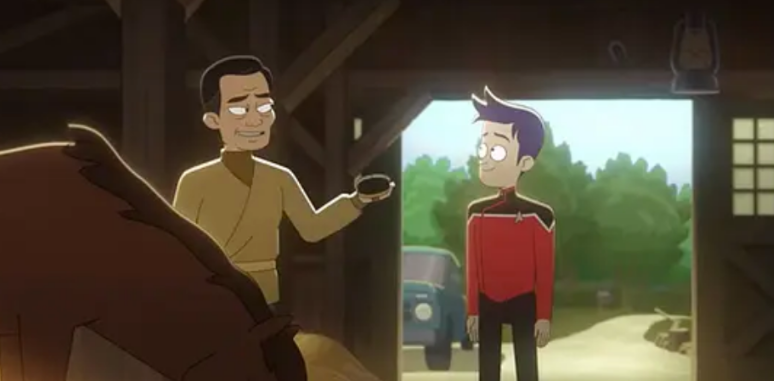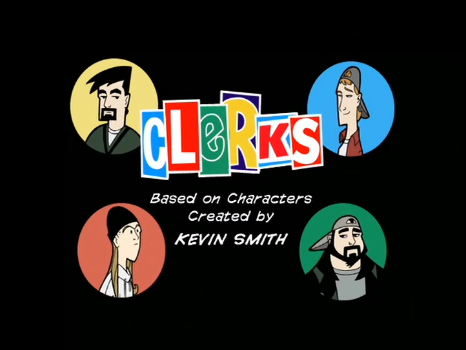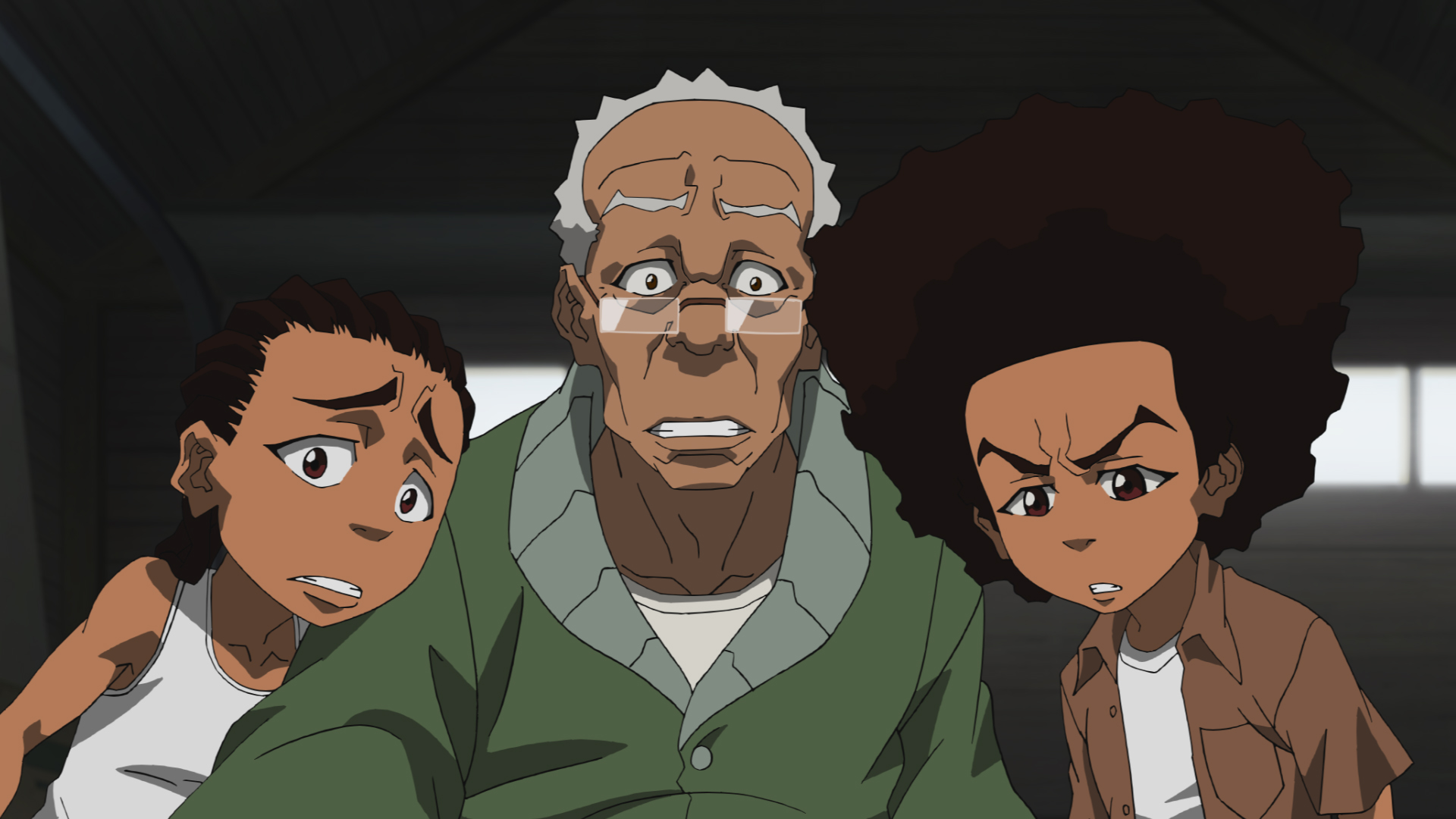Both shows are off-the-charts enjoyable, so when the trailer for the third season of Strange New Worlds showed a live-action glimpse of Lower Decks’ nervous fanboy Brad Boimler and too cool rule breaker Beckett Mariner, a mighty cheer went up from the citizens of Trek-town – whatever was going to go down, it was certainly going to be a lot of fun.
And a lot of fun it was. But it was also a quiet masterpiece of speculative fiction. Star Trek is no stranger to cross-over episodes, but this ep boldly goes where no ep has gone before. “Those Old Scientists” excels at everything, from its overall concept to the tiniest detail – not the least of which is flawlessly translating animated characters into a live-action universe. It’s a tricky manoeuvre, pulled off with gleeful surety. It’s no surprise that this ambitious adventure was directed by Jonathan Frakes – the eternal Riker has directed delightful episodes of The Next Generation, Deep Space Nine, Voyager, Discovery, Picard and Strange New Worlds, as well as the films First Contact and Insurrection. His mind is basically a Mille-feuille of Trek-direction, each layer playing off the one that came before.
So why does the merging of these two radically different landscapes work so well? So many reasons!
The premise is kept as simple as possible – the crews of the Enterprise and the Cerritos are both examining the same mysterious portal, 120 years apart. The Cerritos crew accidentally activate the portal, transporting first Boimler, then Mariner, back in time to meet their heroes – namely Pike, Spock, Uhura and Una (Numero Uno). This basic set-up creates a framework for hanging a lot of high-concept questions for the crew and audience to puzzle over together. It’s also a wise move to begin the episode in the animated realm of Lower Decks. This introduces newer viewers to the characters and get a feel for the pace and physics of the animated series. Animating the opening credits sequence was also a wise move.
The transition to live action happens, of course, when the animated characters cross through the portal. The character design of Boimler and Mariner are based on their voice actors, Jack Quaid (The Boys) and Tawny Newsome (Space Force), making the two accomplished actors perfect human versions of their cartoon doppelgängers. Quaid masters all of Boimler’s pensive tics, constantly folding in on himself while stressed only to spring suddenly towards whatever historically significant Starfleet doo-dad or gee-gaw catches his eye. Newsome absolutely nails Mariner’s bombastic movements and breakneck pace – lunging, lurching and leaning her way through every scene. There’s a moment where she reaches out and grabs Boimler’s shoulder that feels absolutely animated. After spending a bit of time with the crew of the Enterprise, they both note that people from the past talk really slow and quietly.
Quaid and Newsome’s quick-paced cartooniness doesn’t feel at all out of place in the Strange New Worlds universe – both Boimler and Mariner are beside themselves with excitement over meeting their heroes, despite a growing sense of dread over Spock’s Ugly Sonic-esque teeth. They also come from the future, and everybody knows that future means faster.
There is also no manner of “Halloween Homer” Syndrome going on here. Boimler and Mariner don’t feel like they’ve changed states at all, they’ve only gone back in time. Both Lower Deckers and New Worlders perceive themselves as the same kind of real, making it easier to accept them as part of the same physical universe.
It’s also very handy that Strange New Worlds and Lower Decks both have a distinctly ‘Mod’ aesthetic that draws heavily from The Original Series. Primary colours and neatly tailored tunics are popular in both time periods, although Pike and crew are wearing the latest fashions, while the Cerritos crew is rocking a vintage nostalgia look. It’s hard to image such a harmonious fusion would occur if the Lower Decks crew were to encounter the sensible speed suit wearers of Jeffrey Archer’s Enterprise, or get stuck wandering the damp, dank hallways of DS9.
The final ace up the sleeve of this crossover – the hair. Of all the Starfleet captains, Pike has the most cartoony hair. It is considerably taller than Kirk’s and is much less likely to get dishevelled in battle. It‘s basically the exact same height as Boimler’s, and just as immobile. Spock’s helmet-like bowl cut has always looked the same, live-action or animated. The live action Boimler’s bright purple hair is toned down to an almost natural blue-black, and Mariner’s magnificent, gravity-defying pouf-cloud is actually bigger and more buoyant, somehow. Seeing these two crews interact looks natural, because neither one has to compromise on hair proportion.
Eventually Boimler and Mariner make it back to their own time and their old style, leaving the Enterprise’s principle players wondering how much what they’ve learned about who they are going to be someday will change who they are right now. Will this be the end of Smiling Spock?
As an added bonus, we get a post-credits scene with an animated Enterprise crew, thanks to some Orion delaq. Spock gets wiggley armed and everybody feels a bit messed up. It’s very cute.
























"There are also other characters that come and go (also owned by the Warner Bros. Discovery conglomerate media company)."
Huh. Is that just referring to other characters from the show itself, or is this implying that the new season is going to have cameos from other WBD IPs